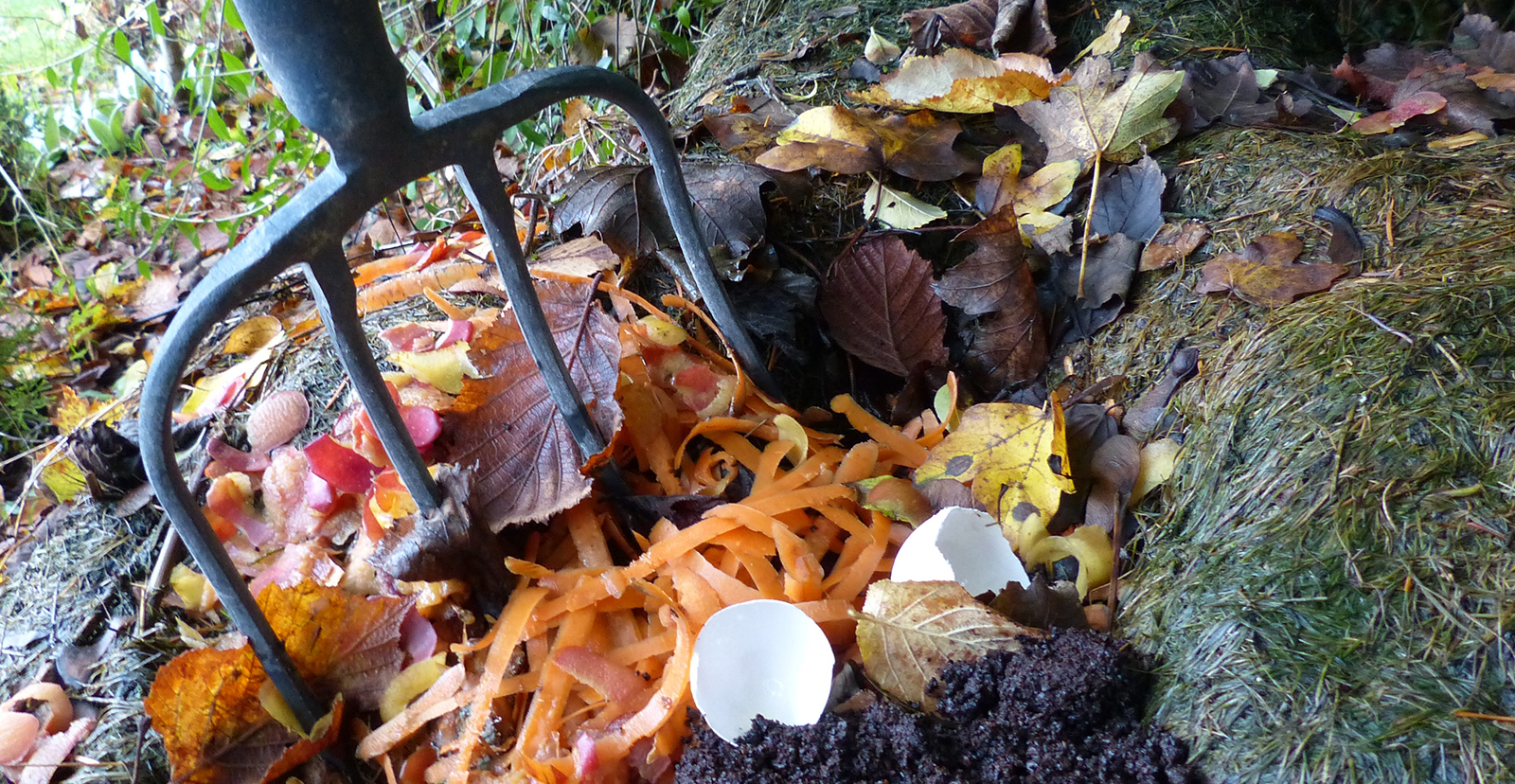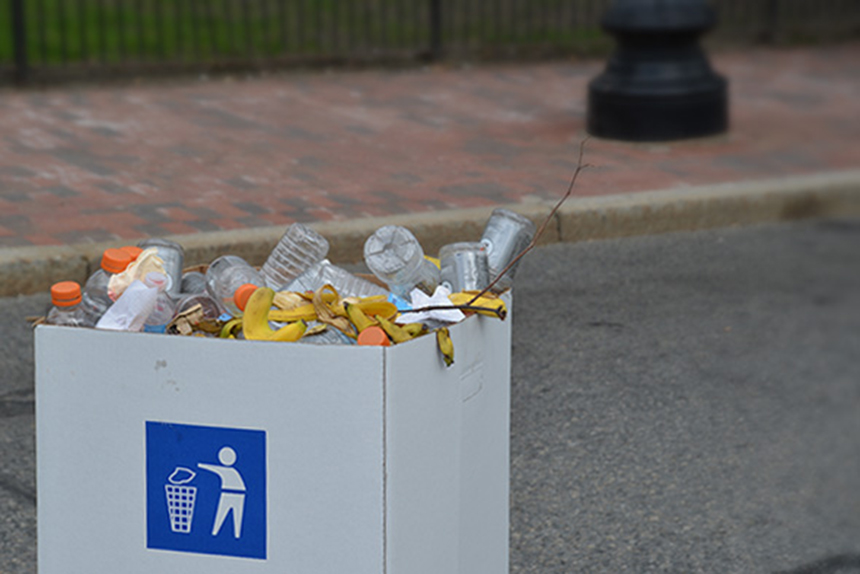When Sally Sells Seashells by the Seashore, Do They End Up in a Landfill?
September 14, 2023
SOUTH KINGSTOWN, R.I. — Oyster and clam shells, piled more than 6 feet high, sat in a lot at the Great Swamp Management Area, waiting for a new lease on life.
Bleached white from the sun and smelling a little salty, the shells will eventually return to the sea, to help the Rhode Island Department of Environmental Management restore reefs.
Reef restoration is the most common way that inedible parts of the shellfish are reused in the Ocean State, though they can also be used to line driveways, enhance fertilizers, or become fibers for sweaters.
Despite their value — after the meat inside has been slurped down — many shells in Rhode Island don’t end up in reefs, flower beds, or clothing threads, because the state doesn’t have a system to recycle the material, which is difficult to compost on a large scale.
Efforts to recycle shells have been decentralized thus far, but some restaurants, advocates, and oyster farmers would like to change that.
The Nature Conservancy’s Rhode Island chapter has led local shell collections in the past and had a program that regularly picked up shells from four restaurants before the pandemic shut it down.
Gathering shells for restoration or any type of reuse posed challenges even before the pandemic, especially for an all-volunteer program run by an environmental nonprofit, Tim Mooney, TNC communications and marketing manager, told ecoRI News.
“We’re not a waste hauler,” Mooney joked, although he said TNC’s program had to be run like one because inconsistent shell pickups would have left buckets of rotting oyster shells on restaurants’ doorsteps, which the businesses unsurprisingly did not want.
Post pandemic, the organization has started collecting shells at festivals with the help of Clean Ocean Access (COA), but hasn’t begun collecting shells from restaurants again — at least not yet.
Space is part of the problem, Mooney explained. The shells have to go somewhere, and like food scrap, they have to be processed before they assume their new role. After being washed of contaminants, the empty shells are laid out to dry for at least six months before they can go back in the water for a restoration project.
TNC currently has a stockpile of shells at Great Swamp, ready for use in future projects, but without a system in place dedicated to getting shells collected, processed, and delivered to reefs, shell recycling can’t happen on a large scale, Mooney said.
“It’s all great until the festival is over, and you are carrying 200 pounds of shell down the street,” he said.
Still, the prospect of structure, like a state’s recycling program or grassroots composting for shells, excited Eva Touhey, COA’s director of sustainability.
“When I think about it too much, I’m like, ‘Okay, Eva, rein it in, rein it in,’” she said, laughing.
Touhey has participated in several meetings, run by a TNC volunteer, to bring together stakeholders and find ways to streamline the shell recycling process.

Some communities in the southern United States, where seafood production is a larger industry, already reuse shells on a mass scale in models that Rhode Island could look to.
Touhey said part of the process will be an attitude change, to which many local restaurants and people already seem receptive.
At the last Newport Oyster and Chowder Festival, Touhey said COA helped divert about 70% of the waste from the event away from the landfill, including about 2,220 pounds of shells that were collected and hauled to the shell stockpile by TNC.
Attendees were conscientious about separating the shells from the trash, just like any recycling and composting process. COA volunteers on the ground had to pick out a stray lemon slice here and there, but otherwise the oysters were largely sorted properly.
Although COA has focused more on composting initiatives, Touhey said she’s also seen restaurants enthusiastic to get on board. She said a shell waste stream could be coupled with the compost streams that businesses are already building.
The Reef restaurant in Newport participated in TNC’s shell collection program before the pandemic, and raw bar specialist Scott Helquist said he wants it to start again.
Helquist only uses Rhode Island oysters on his menu, in part because of the freshness and taste, but also because of the positive environmental impact of using local ingredients.
He said he’d like to see a co-op form that creates a more streamlined cycle for local products, from farm to restaurant, and then for leftover shells from restaurant to reef.
Not only does the fresh product benefit the restaurant, but it also benefits Rhode Island’s waters, said Helquist, who referred to himself as Newport’s worst surfer. Oysters and other shellfish naturally cleanse ocean ecosystems of excess nitrogen, a nutrient that spurs unnatural and harmful algal growth in high concentrations.
And unlike other foods, he said, a shellfish’s natural packaging can be reused.
The Aquidneck Island Oyster Co., where Helquist gets his house oysters for The Reef, saves its shells for restoration projects. During COVID, the just-opened farm worked with DEM and the USDA on a reef restoration near Mount Hope Bridge using both extra shells and live oysters that went uneaten during the pandemic’s pause on restaurant dining.
Matunuck Oyster Farm also saves all its extra shells for restoration projects, according to farm manager Oliver Dixon.
“The goal is to bring back the wild fishery that isn’t what it used to be,” he said.
Although the main reason for saving the shells is restoration, Dixon said Matunuck’s excess shells have also been used for building foundations and at least one driveway. Extra shells can also be used as a substrate for growing oysters in a farm, although Matunuck doesn’t use it that way because the hard-packed sandy bottom of Potter’s Pond is already a good farming ground.
All of American Mussel Harvesters’ shells end up in the landfill, according to general manager Greg Silkes. The composter the company used to send their shells to stopped taking them because they could only break down clam and oyster shells and the company mostly had mussel shell waste.
The North Kingstown-based company would like to find a way to divert shells away from the trash, but plans to do so were derailed by COVID.
Silkes knows the company’s shells could be used for fertilizers or lime production, but finding a company to take them and space to keep them all while they dry out before they can be processed are also issues. Silkes said he’d try giving them away because the cost of bringing them to the landfill is “ridiculous.”
When Europeans colonized Rhode Island, it was actually the oysters’ shells that made them a valuable resource because they were an important ingredient in the production of lime. Colonists would toss oyster shells into kilns, unshucked and with their meat still inside, but the practice was outlawed in 1734 for its wastefulness, according to A Brief History of Oyster Aquaculture in Rhode Island by Michael Rice.

As oyster consumption grew and natural reefs were decimated in the 1800s, the state stepped in again to mandate the use of discarded shells for reef restoration.
Today, reefs are still important ecosystems for young oysters and other small sea creatures, Eric Schneider, a principal marine biologist at DEM, told ecoRI News.
Although reefs can be made with different types of shells, whole oyster shells perform best. “There’s kind of more nooks and crannies, more areas for attachment,” Schneider said.
DEM sometimes uses surf clam shells to create a base for the reefs that are then covered by a layer of oyster shells. Although some of the shells for the projects come from local sources, there aren’t enough oyster shells “on hand” in Rhode Island, Schneider said, so the department does purchase shells from out of state.
The state is currently updating the Rhode Island Comprehensive Solid Waste Management Plan with funding from the Environmental Protection Agency. A key part of that update will be identifying materials that can be diverted from a landfill and shells are a part of that, according to DEM sustainability coordinator Dave McLaughlin.
“It’s probably in the thousands of tons of shells that go to the landfill each year,” he said.
DEM has even experimented using shells to prevent coastal erosion, Schneider said.
Schneider did note that despite the many benefits of placing oyster shells in the ocean, seafood lovers with shells at home should not try to create a restoration project on their own.
“Despite the good intentions, it would not be beneficial for folks to simply go and put shells in the water haphazardly,” Schneider said. It could pose a disease risk for other oysters already in the water and regulations prohibit it.
“We don’t just move oysters and clams around willy-nilly,” he said.




NRCS was offering Conservation Innovation grants with re-using shells for reefs as a priority. Maybe they will be available again next year. https://www.nrcs.usda.gov/programs-initiatives/cig-conservation-innovation-grants/rhode-island/conservation-innovation-grants#:~:text=NRCS%20has%20up%20to%20%24170%2C000,agricultural%20production%20in%20Rhode%20Island.
Here’s some trivia for you. In 1949 Luther Blount (Blount Marine in Warren) built the Rhodoyster Jr. to plant oysters. This was quickly followed by the Rhodoyster which was capable of hauling 70 tons of shells and was used to remove and dispose of shells from Blount Seafood. It was also used to plant oysters. He also built the Anna B and the Deborah June which were designed for similar purposes. I’m sure that back then there was little concern for whether or not the shells were “clean” before being disposed of in the bay.
Shells also offer a way to sequester carbon. Placing in the deep ocean would trap carbon dioxide and remove it from atmospheric interactions.